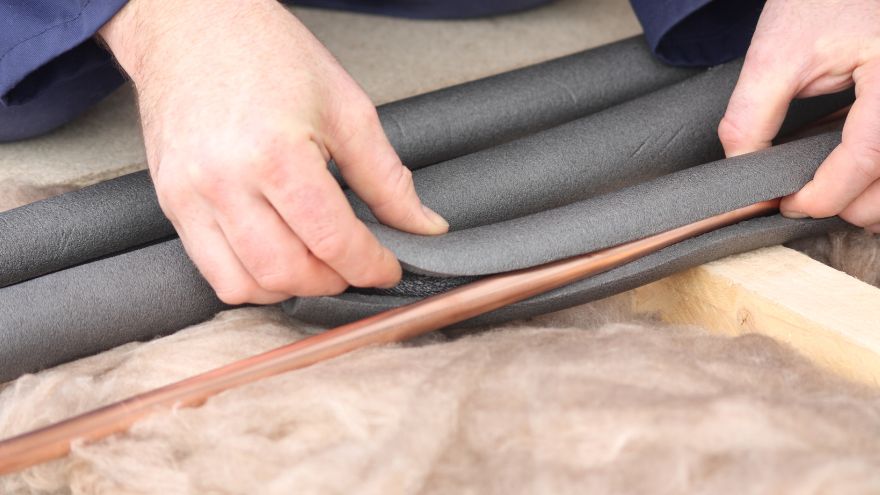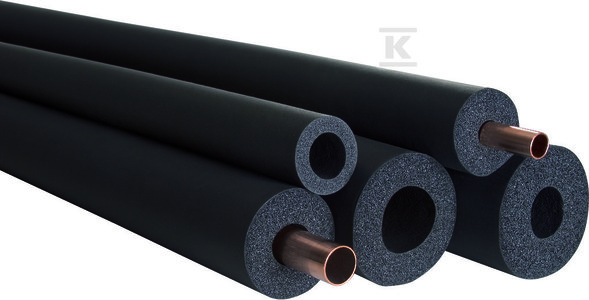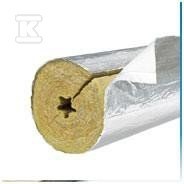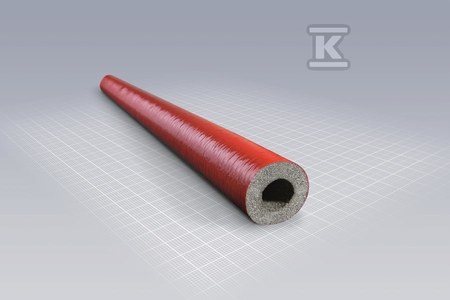Pipe lagging is a protective material that is placed around pipes to prevent heat loss, reduce condensation and increase protection against mechanical damage. Appropriate pipe insulation ensures maximum tightness and prevents leaks, which can generate high repair costs. That is why pipe lagging is so important. How to choose the best one?

Check pipe coatings at the Onninen wholesaler
When is it worth choosing pipe coating?
 Pipe lagging should be used to protect the pipes, at least against external factors. It can protect water and sewage pipes, as well as cooling and heating pipes. Thanks to the lagging, you can achieve better thermal insulation and thus easily reduce the risk of heat loss. The water that flows through the pipeline located in the lagging loses less heat along the way, and thanks to this, a smaller radiator can be installed, which means that heating costs become lower. However, the role of the buffer does not end there. Many heating pipes are located in the walls or even in the boiler room. In this case, the lagging protects the pipe against mechanical damage, but also protects users against possible burns. Lagging should also be used when you want to improve the acoustic properties of your house. Thanks to it, you can reduce noise and vibrations coming from the pipes. Additionally, thanks to the lagging, the risk of water freezing in the pipes is much lower.
Pipe lagging should be used to protect the pipes, at least against external factors. It can protect water and sewage pipes, as well as cooling and heating pipes. Thanks to the lagging, you can achieve better thermal insulation and thus easily reduce the risk of heat loss. The water that flows through the pipeline located in the lagging loses less heat along the way, and thanks to this, a smaller radiator can be installed, which means that heating costs become lower. However, the role of the buffer does not end there. Many heating pipes are located in the walls or even in the boiler room. In this case, the lagging protects the pipe against mechanical damage, but also protects users against possible burns. Lagging should also be used when you want to improve the acoustic properties of your house. Thanks to it, you can reduce noise and vibrations coming from the pipes. Additionally, thanks to the lagging, the risk of water freezing in the pipes is much lower.
How effective is pipe lagging?
It is worth knowing that pipe lagging provides optimal thermal protection. It can actually reduce heat loss by several percent. All you need to do is use it as pipeline insulation. Of course, it also prevents leaks and provides maximum protection against heating in refrigeration installations. It must not be forgotten that moisture-proof insulation protects against water vapor condensation, which may occur in the thermal insulation layer. This, in turn, may cause the development of dangerous molds or fungi. There is often a reduction in thermal parameters and even corrosion of individual elements of the installation. Therefore, the lagging reduces costs, protects against burns and increases safety.
How to choose a coating for water pipes?
 Lagging can be made of various materials and on this basis they are selected for insulation and purpose. You can choose models made of polyurethane foam, which will work well in both cooling and heating installations. They have very good insulating properties. They tolerate temperatures well in a wide range, namely from minus 80 to 105 degrees Celsius. Importantly, they can also be used to insulate outdoor spaces. Wool insulation withstands an even wider temperature range, namely from minus 250 to even 500 degrees Celsius.
Lagging can be made of various materials and on this basis they are selected for insulation and purpose. You can choose models made of polyurethane foam, which will work well in both cooling and heating installations. They have very good insulating properties. They tolerate temperatures well in a wide range, namely from minus 80 to 105 degrees Celsius. Importantly, they can also be used to insulate outdoor spaces. Wool insulation withstands an even wider temperature range, namely from minus 250 to even 500 degrees Celsius.
Mineral wool, which is most often used to insulate water pipes, works very well. It does not change its volume or properties. Styrofoam lagging is much less commonly used, as it is relatively stiff, but on the other hand has really decent insulating properties, but you have to be careful not to create thermal bridges. The rubber laggings are also worth mentioning. This material is highly resistant to both UV radiation and chemicals. It can be safely used as a coating for external pipes.
Pipe laggings at the Onninen wholesaler
When choosing a pipe coating at the Onninen installation wholesaler , you can choose a product such as the Armacell IZO-MAX IZO-18/6-PE 2m pipe coating . It is made of flexible insulating material with a cellular structure. Thanks to it, you can reduce heat losses in both heating and water supply installations. It can be safely used even in places where the temperature is high, up to 95 degrees Celsius.
Also noteworthy is the Armacell Armaflex HT-13×018 rubber pipe coating 2m . This is a really strong model with really good durability parameters. You need to know that it is very flexible. It has a closed cellular structure. This makes it resistant to water vapor. Additionally, it protects the installation against condensation.
A good choice may also be the Paroc Combi Alucoat T 1.2m mineral wool pipe cover . It has high fire resistance and resistance to water vapor condensation. Increases the efficiency of heating and ventilation insulation. It has a self-adhesive tab, which makes installation even easier.
